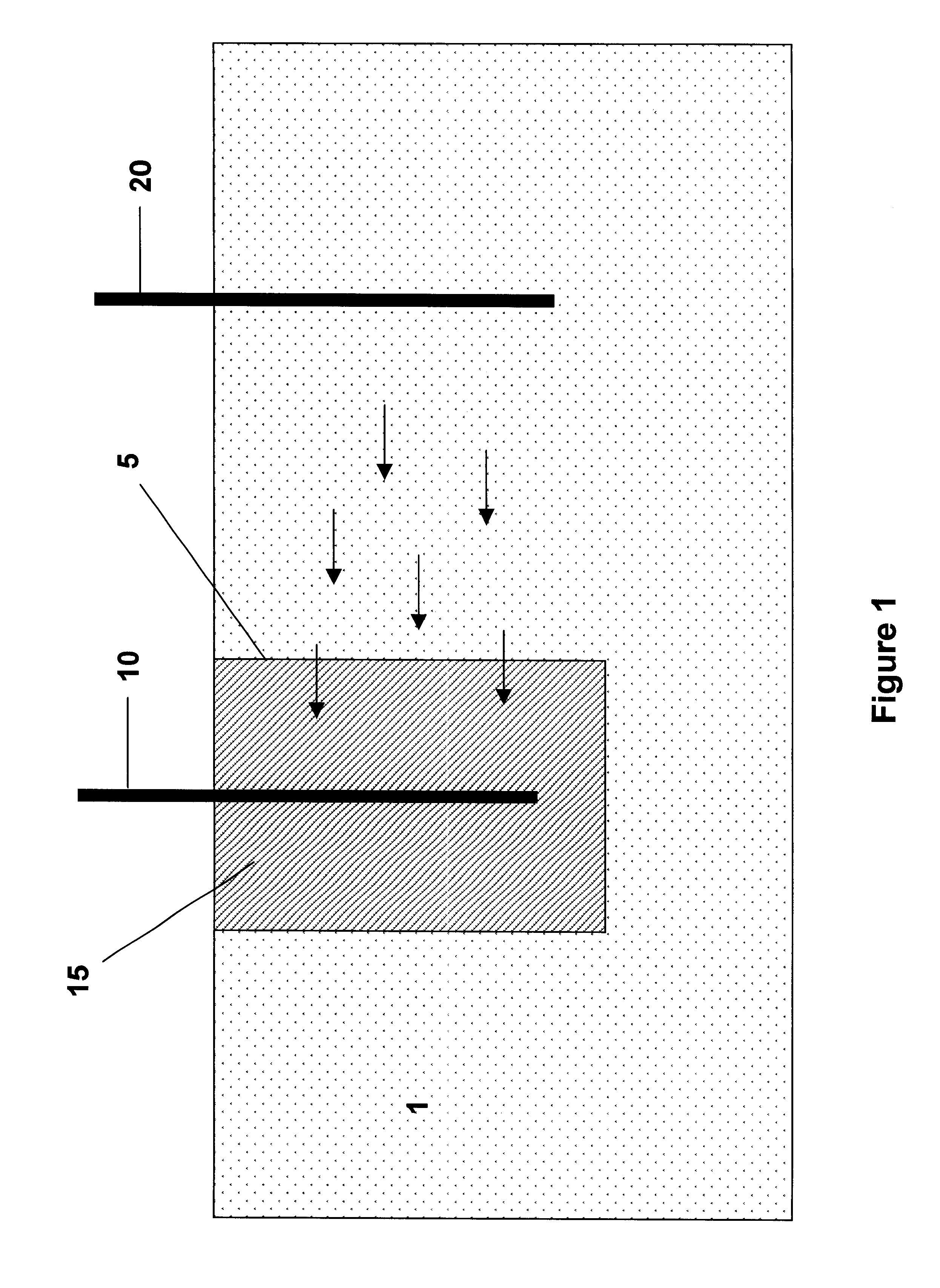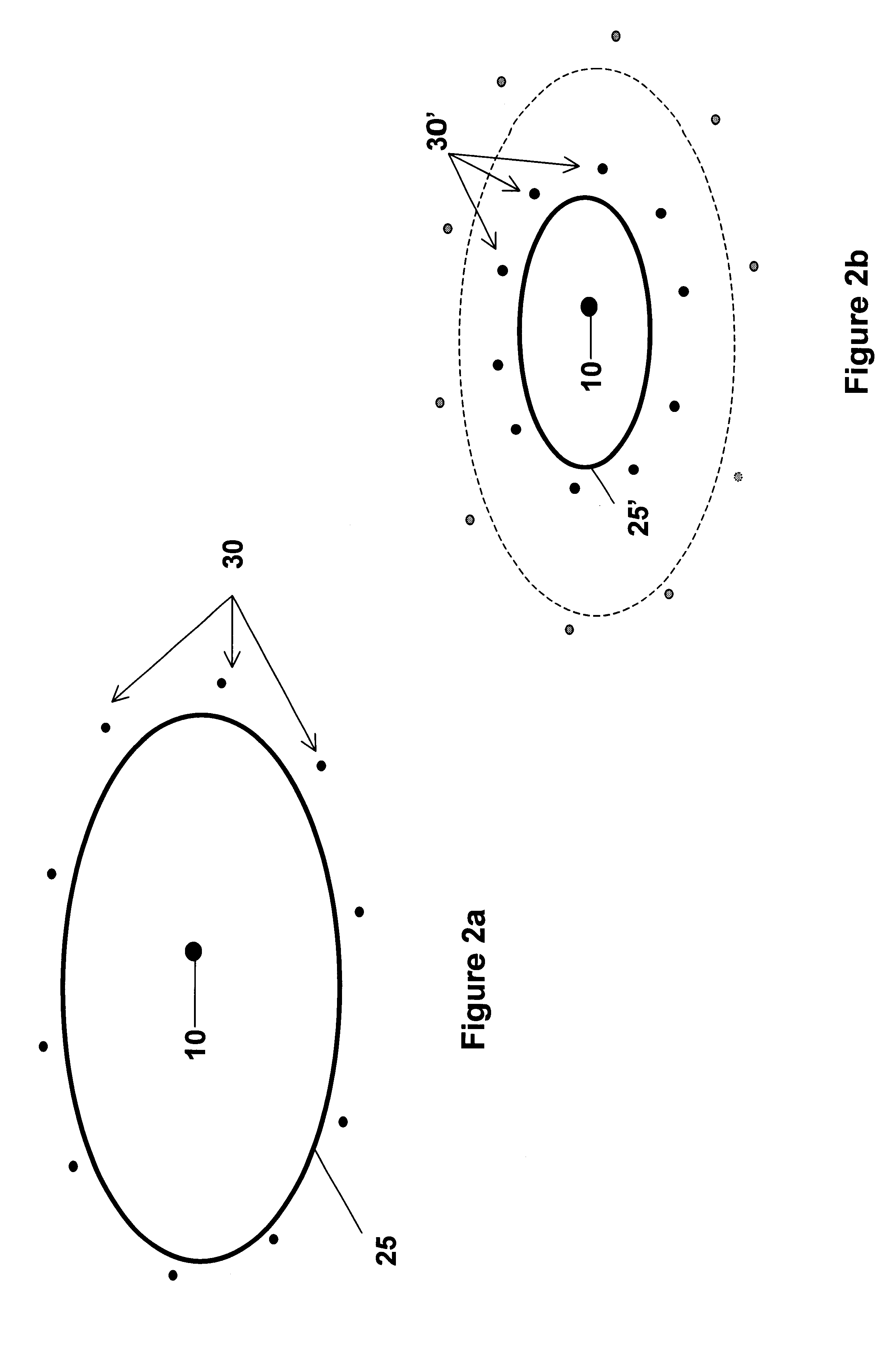Electrokinetic removal of charged contaminant species from soil and other media using moderately conductive adsorptive materials
a technology of adsorption capacity and adsorption rate, which is applied in the direction of liquid/fluent solid measurement, fluid pressure measurement, peptide, etc., can solve the problems of affecting the physiology of humans and animals, negatively charged species are the target for removal, and the adsorption capacity of such resins can be limited, so as to achieve convenient adsorption and removal, convenient adsorption, and stable waste produ
- Summary
- Abstract
- Description
- Claims
- Application Information
AI Technical Summary
Benefits of technology
Problems solved by technology
Method used
Image
Examples
Embodiment Construction
The following experiment demonstrates the feasibility of removing chromate from unsaturated soil using an activated carbon bed around an anode. This experiment used a bare stainless steel wire mesh cathode (analogous to multiple steel or iron cathodes positioned near the outside perimeter of a contaminant plume). Clean dry soil (1455 g) was mixed with 145.5 g of water containing 0.291 g of Cr(VI) resulting in soil with 200 ppmw Cr(VI) and 10 wt % moisture. This soil was packed in a 4.5 inch I.D. cylindrical cell with a 1-inch diameter spacer in the center. The spacer was removed, a 0.25-inch diameter iridium coated titanium electrode was held in the center and the void between the electrode and the soil was filled with 44.92 g of activated carbon moistened to 64.14 wt % (27.37 g dry activated carbon and 17.55 g water). Even at this moisture content, the activated carbon still appears and handles as if it were dry.
The experiment was operated at 100 mA for the first 17.5 hours and at ...
PUM
| Property | Measurement | Unit |
|---|---|---|
| Electrical conductivity | aaaaa | aaaaa |
| Perimeter | aaaaa | aaaaa |
| Electrical current | aaaaa | aaaaa |
Abstract
Description
Claims
Application Information
 Login to View More
Login to View More - R&D
- Intellectual Property
- Life Sciences
- Materials
- Tech Scout
- Unparalleled Data Quality
- Higher Quality Content
- 60% Fewer Hallucinations
Browse by: Latest US Patents, China's latest patents, Technical Efficacy Thesaurus, Application Domain, Technology Topic, Popular Technical Reports.
© 2025 PatSnap. All rights reserved.Legal|Privacy policy|Modern Slavery Act Transparency Statement|Sitemap|About US| Contact US: help@patsnap.com



